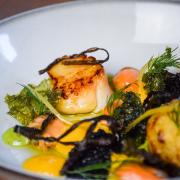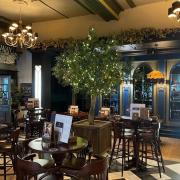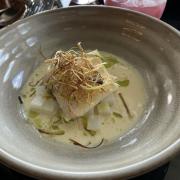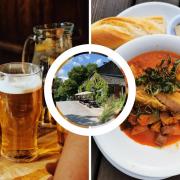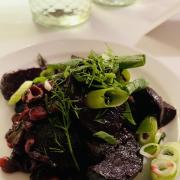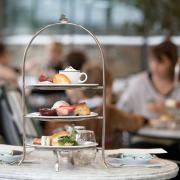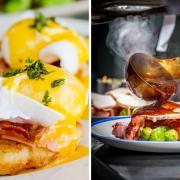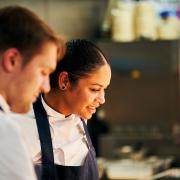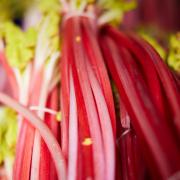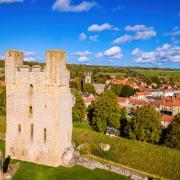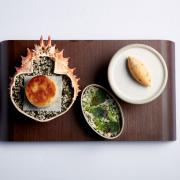There seems to be a restaurant or café on every street corner in Harrogate with one eatery successfully turning to the public to help them compete, as Martin Pilkington finds out.

For three years and more Scandinavian restaurant Norse has been doing the catering equivalent of sleeping on its mate’s sofa, occupying in the evening the space used by Nordic cafe Baltzersen’s during the day. In spite of that inconvenience it has enjoyed great success – Jay Rayner one of many critics to enthuse about their food. Both establishments in Harrogate town centre are owned by Paul Rawlinson, so there were probably no arguments about the washing up, but he’s delighted that shortly Norse will have a new home of its own.
‘The 8th of April will be first full service open to paying customers,’ says Paul, whose Norwegian grandma’s cookery inspired the original cafe venture. ‘We’re all looking forward to it hugely as it will allow us to improve things like furniture, the ambience, and the breadth of our wine list. And it will be good to see what the guys can do in their bigger and better kitchens.’
The opening in their new premises in Swan Road, near Valley Gardens, once the home of the short-lived Wild Restaurant, has been partly crowdfunded. ‘It was super-successful,’ enthuses Paul. ‘We expected it to be a long slog and to need extra effort to keep it in the public gaze, but it ran away with us.’ The £20,000 target was raised in just four days.
Simon Jewitt, Norse’s head chef, is a partner in the relocated operation. He’s equally thrilled by the response. ‘We’d been allocated 30 days and it took four, which is fantastic. And it’s great to know we have that support, and pretty humbling too.’

The recipe for Norse’s success combines both Scandinavian and Yorkshire elements. ‘The last 10 years have seen a massive revolution in food in Scandinavia,’ explains Simon while Paul cites the example of Noma in Copenhagen, frequently named as the world’s best restaurant by food critics. ‘I follow the Nordic manifesto,’ says Simon, ‘which is all about top quality local sourcing from as close as possible to the restaurant, seasonality and not wasting anything. My inspiration comes from using classic combinations of food but employing new techniques, like Scandinavian preservation methods.’
The team works hard to build relationships with suppliers such as Farmison’s, a butcher in Ripon from whom he just bought 30-day-old milk-fed lamb, and he uses the services of a local forager to back up his own efforts locating ingredients like wild garlic, cowberries and wood sorrel. ‘Coming into spring we’re using local rhubarb, a proud Yorkshire moment for a proud Yorkshireman, and as this is a Scandinavian restaurant as well as using it fresh we’re preserving some for later in the year – I just pickled 10 kilos, am fermenting some, and will be drying some out to make powders.’
Norse has built its reputation on high-end tasting menus, which will continue in the new premises, but they’ll also be offering small plates and an option where larger dishes like short-rib of beef, or for vegetarians roast celeriac to be shared by diners.
‘Being independent means flexibility, pushing things you like and enjoy, but I think that more than that, like most independents, we rely on having those stories behind the elements of the business,’ says Paul. ‘It’s about the talent of the chefs, the producers you’re in contact with, having free rein with the menu and really working at the training of the team so we can give great service.’ And as if to give a practical example he and several colleagues were heading off to taste almost 400 wines before choosing a select few for their list.
Harrogate is becoming, it seems, a very competitive town as far as hospitality and eating out is concerned. Is there a danger of too many spoiling the town? Not necessarily so. Steve Patton from the tourism organisation Visit Harrogate says: ‘Harrogate is very lucky in its restaurant provision for a number of reasons. The first of which is that it’s one of the UK’s major conference centres and secondly it’s a fine spa town with lots of cultural attractions, popular as a destination since Victorian times – the economy here is driven by leisure, tourism and the hospitality industry. ‘There are more than 135 restaurants here now and being an affluent area makes it a good market for them but that also makes it very competitive, and can mean it’s tougher retaining staff,’ adds Steve. There is a very wide selection of the world’s favourite cuisines to choose from without venturing beyond Harrogate’s outskirts. A quick scan reveals Turkish, Greek, Thai, Italian, French, Chinese, Mexican, American, Japanese, British, Cajun, Italian, Mongolian, Spanish, Brazilian, and of course with Norse, Scandinavian, and there are probably more.
The town has attracted the top national chains, though independents remain the majority. It’s a win-win situation for consumers who can choose from brand names everyone recognises, or be more adventurous and opt for places that have carved out niches for themselves by focusing on their individuality.
But do you think Harrogate has too many restaurants? Would you prefer a greater variety of shopping in the town? Email your views to feedback@yorkshirelife.co.uk




